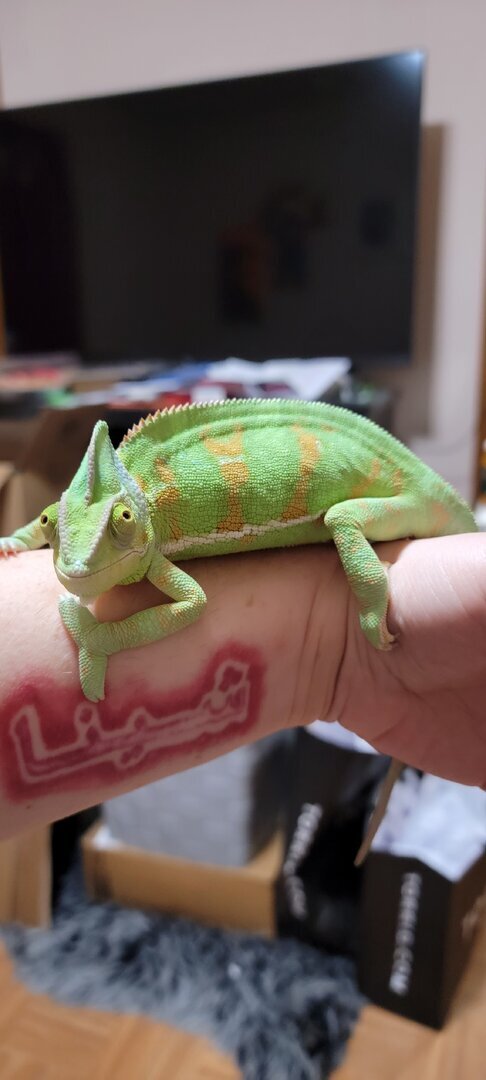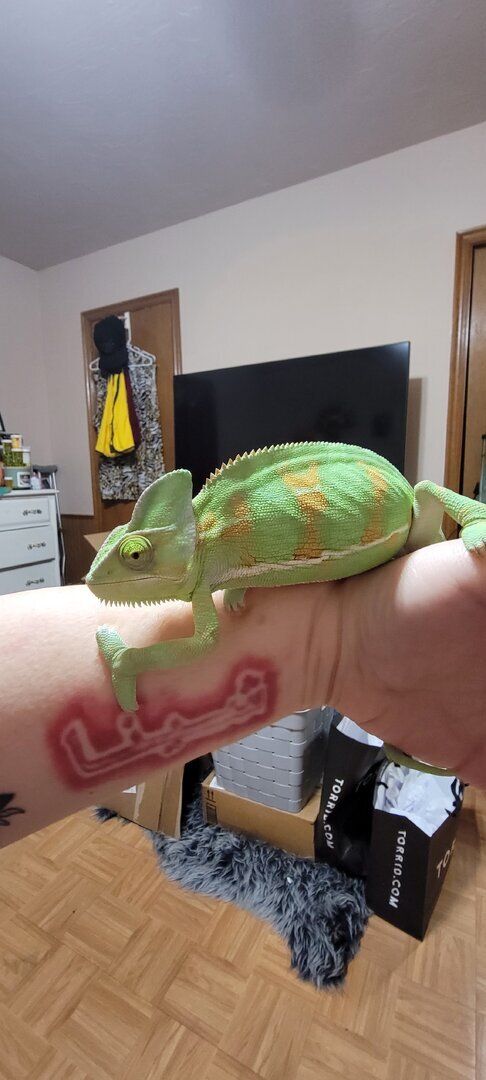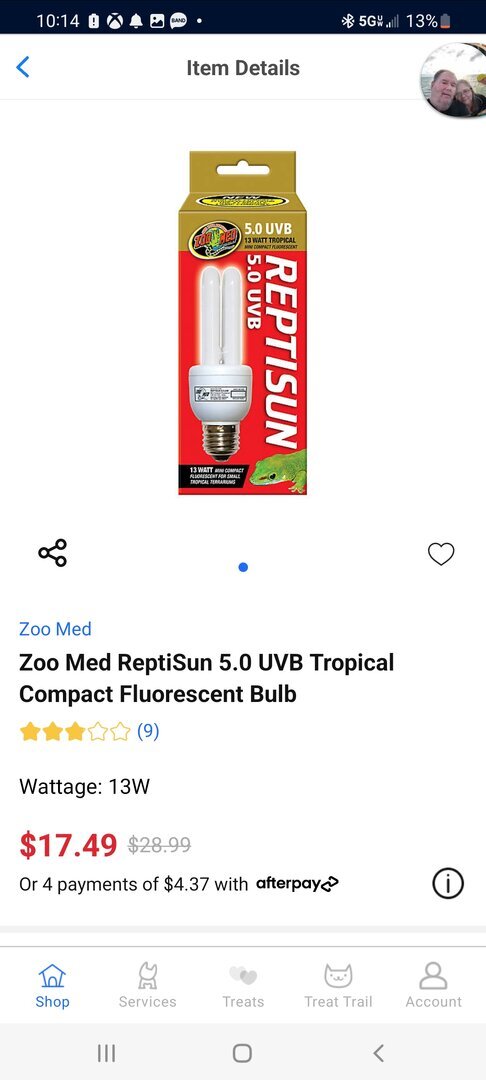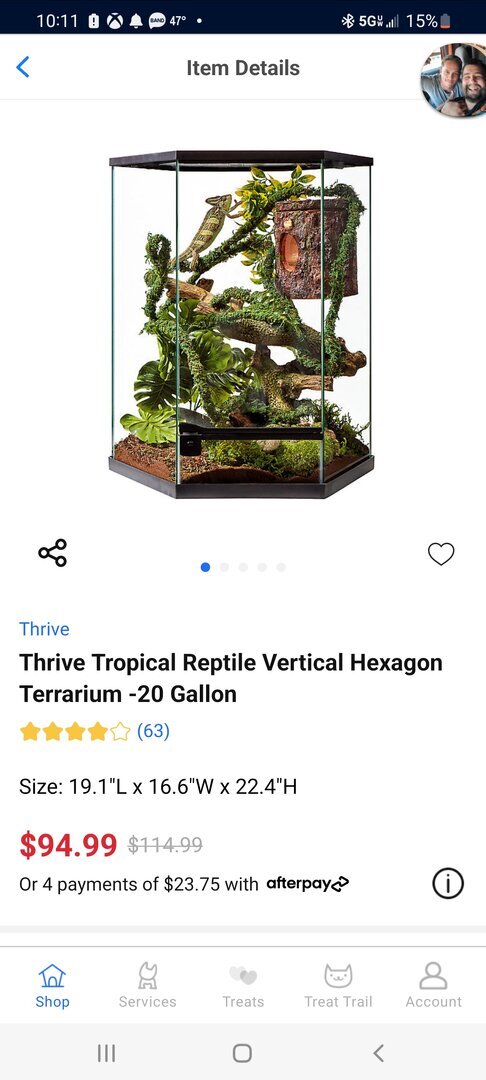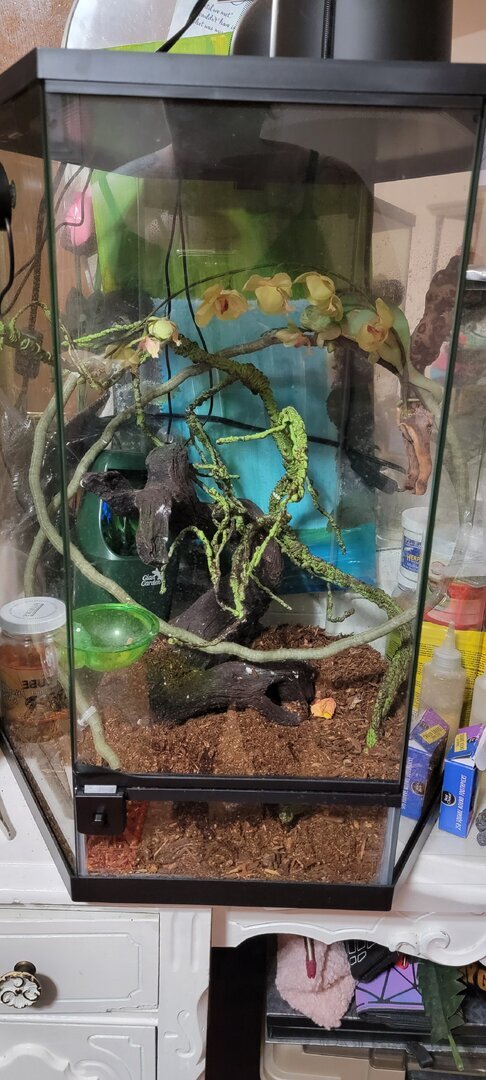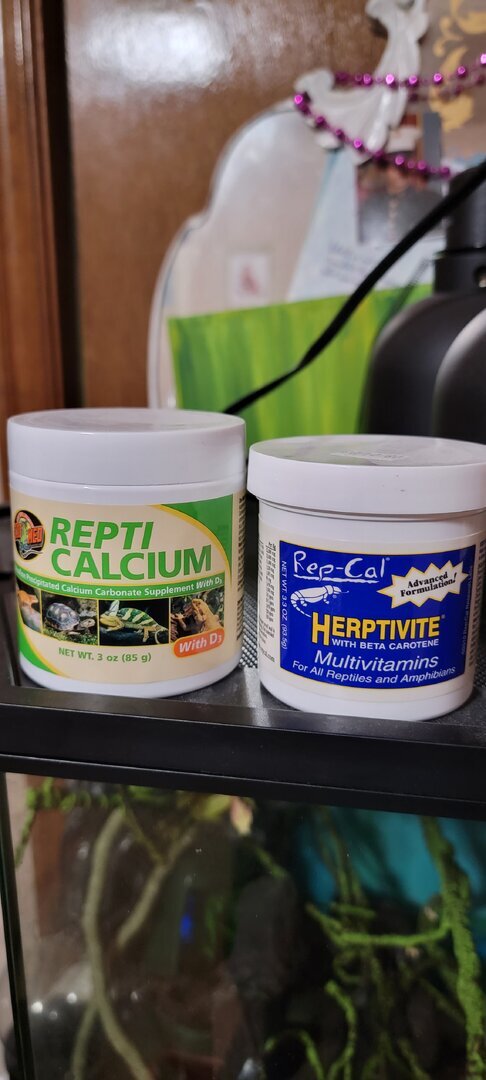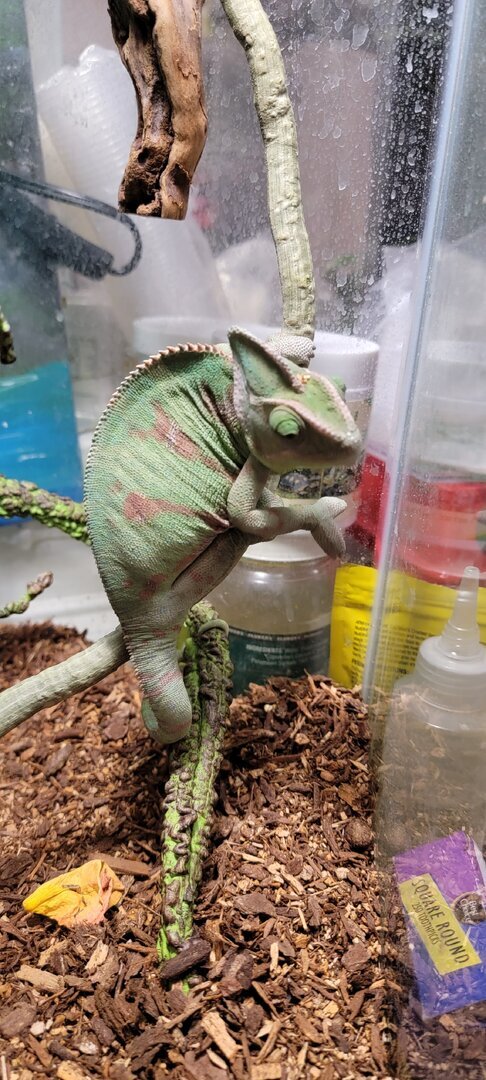xBUNNYCHUx
New Member
So this is baffling to me, my female veiled chameleon is digging around at the bottom of her enclosure, I do keep substrate in her enclosure (I know it's not recommended, but I think it's unnatural not to). She has never attempted to eat the substrate and she seems to enjoy it. Well she is acting as though she needs to lay eggs (very heavy digging in her substrate which is Zilla Jungle Mix), so I made her a lay bin with 50/50 sand and organic soil and she immediately started tasting it. I removed it and have repeated the process a few times now. Yesterday the digging intensified so I tried the lay bin again. She started to dig a little but then start taking big bites of the dirt so I had to remove it again. I don't know what to do. If I don't provide a bin, she will be come egg bound, but if I provide a bin she will die from impaction. Any tips???





